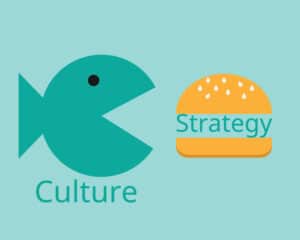Those that know, do. Those that understand, teach.
— Aristotle
This is Part 1 of a 2-Part series

I’m a lifelong student of leadership. I live it, breathe it, study it. I coach executives in it, and advise senior-most teams on its concepts, principles, and values.
Yet I learn – from those very people paying me for counsel. No, this isn’t a consultant-stealing-my-watch-to-tell-me-the-time moment; it’s how we all get better. We study, learn, execute, examine, and adjust – adapting to changing environments and results.
And I learn a ton from our clients. Watching them execute, adjust, and execute again. Testing, reinforcing, molding behaviors to fit their organization’s needs. It’s fun to watch. So, I’ve decided to share my learnings; after all, I learned them from someone else, it only seems fair to pass them on.
My Top 10 Lessons Learned from Clients, circa 2021:

We cannot, however, progress past an ineffective culture. Organizations succeeding (not simply surviving) through our recent apocalypse didn’t do so simply because their CEO was smarter than the others, or because their credit line held up.
Culture supports leadership and organizations when tangible resources cannot. People’s desires to succeed, based on their support of the organization’s direction and demonstrable principles, is what separates the surviving from the thriving. Get it right.
2. Intellect, purpose, and leadership are key. In senior roles, intellect, purpose, and leadership beat out subject matter expertise hands down. Sure, rockstar functional expertise coupled with these components would be fantastic; but frankly, that functional mastery is way down the list for success.
Not to say we don’t want subject matter expertise – only that, when canvassing candidates for those roles, don’t start with specific knowledge. Start first by identifying those with the intellect (business acumen, learning ability), purpose (desire to succeed, proven processes), and leadership (influencing, collaborating, driven).

Windfalls may make bonus time fun, but do not showcase leadership success. The occasional windfall is a pleasure for all to enjoy, to be sure. But a reliance on windfalls is like buying lottery tickets as a retirement plan.
If a manager is producing solid metrics but is unable to describe how they did it or equally unable to explain how those metrics will be repeated, they aren’t leading, they’re simply along for the ride. A fun ride, to be sure, but they aren’t leading. Good leadership takes advantage of good luck – it doesn’t require it to succeed.
4. High functioning teams disagree. A lot. Difficult discussions are essential for team success. Remember, when reasonably intelligent, well-intentioned people disagree, the organization is better served.
One of the most high-functioning leadership teams I’ve worked with didn’t necessarily start out that way. It wasn’t until they could trust each other enough to safely disagree – frequently if necessary and with strong passion and conviction – that they really began to gel.
This same team asked for 360 surveys on the entire team, not uncommon in my world. Then they wanted to share their results with each other; again, not entirely uncommon.
Finally, and this is the uncommon part, I facilitated a session with the team to share openly in groups how they could help each other build and improve on the strengths and opportunities identified in each other’s 360 survey. Courage, transparency, vulnerability. A big deal.

Followed by “Damned, we’re smart. We put the right person in the right job!”
Then, reality hits. The honeymoon wraps up, and the new exec faces some challenges that maybe they weren’t prepared for. Maybe they make a bad decision or two. It’s easy to say, “I’m not sure we put the right person in that job.” In fact, however, mistakes will be made, some things will get screwed up, missteps will occur, judgments will be questioned.
Know this. Realize going in that Mr/Ms NewExec will do some great things initially (hopefully), but eventually will become part of a functioning reality where big things happen and mistakes are made; we accept both and move on. Accolades for wins, grace for losses. Two heads of the same coin.
Stay tuned for 10 Client Lessons from 2021, PART 2

